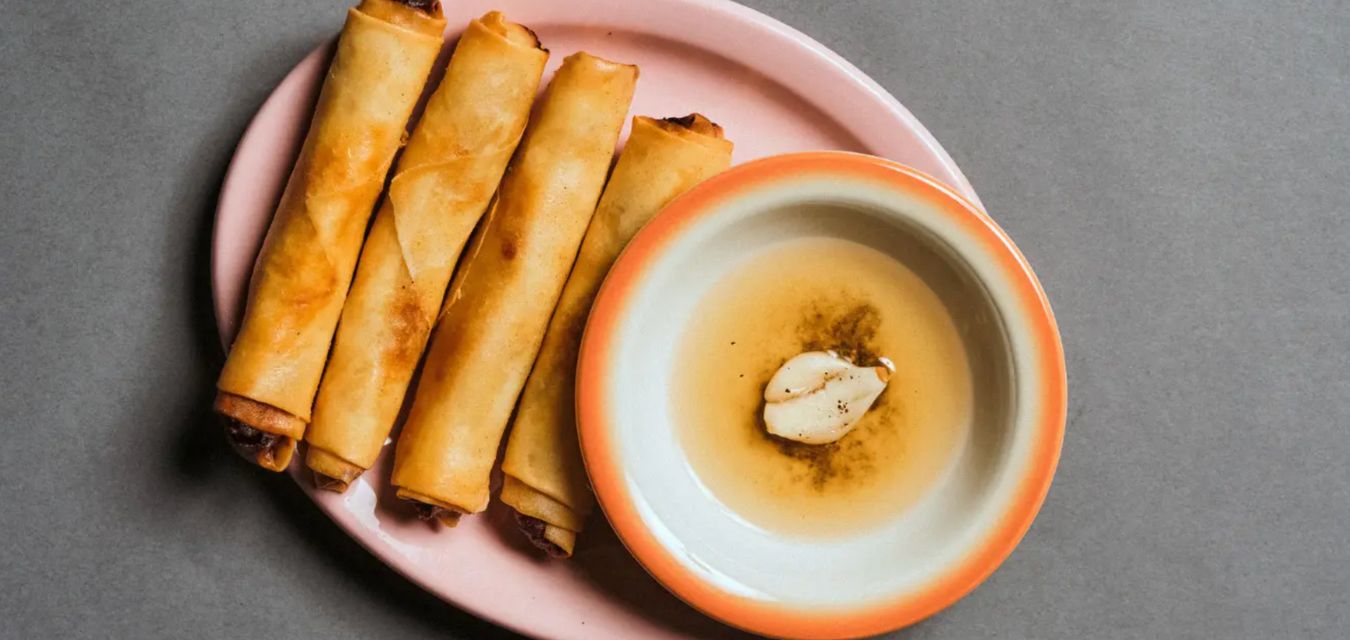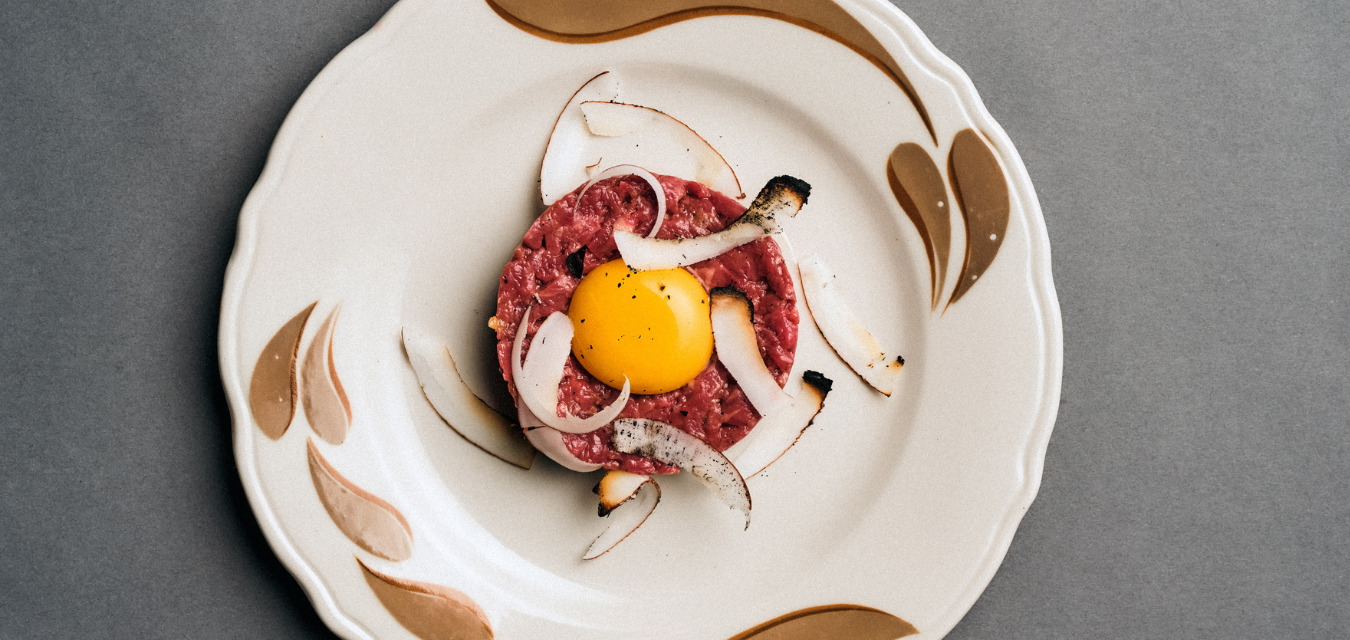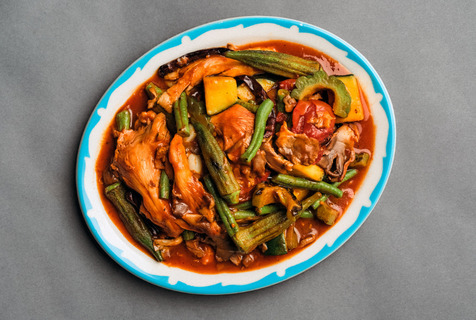
The prologue to dinner at Neng Jr.’s—Asheville’s first Filipino restaurant, created by chef Silver Cousler Iocovozzi—begins in an alley along the rear of the building at 701 Haywood Street in quirky West Asheville. A light illuminates a red alcove and “Neng Jr.’s” scripted above an octangular medallion on a black door. Open the door and ascend the narrow staircase cocooned in red walls to the landing, where you will be greeted and escorted to your place among 17 seats.
Nine of those are ’30s-era revolving round stools reclaimed from the snack shop of a Greenville Christian university, tucked under a red-topped L-shaped bar that is practically an extension of the wide-open, galley-sized kitchen. A little farther removed is a banquette—also L-shaped—but the snug room grants visual intimacy between guests and chef-at-work, as Iocovozzi recently witnessed. “One Sunday afternoon when we were closed, I sat on the banquette to get the customers’ visual. They can literally see me from head to toe. That feels very vulnerable but also very personal, which is what we want. I don’t feel the need to hide anything I am doing,” they said.

Iocovozzi is not just speaking of cooking but also of their experience as a transgender person in a variety of roles: as a chef; as the child of a Filipino mother and American father, raised in Cary, North Carolina; in a husband-and-husband relationship since June with artist/performer/sommelier and trans man Cherry Iocovozzi; and as an out-loud leader of a tightly knit staff that celebrates the LGBQT+ community.
The statement shade of red—called showstopper—is a bid for luck but also an homage to Iocovozzi’s most significant influence, their mother, Neneng Cousler. “Red has been ingrained in me as a symbol of luck since childhood. I have an early memory of my mom painting her door red. She also knew right away the color of the bar should be red,” Iocovozzi says.
The opening of Neng’s, nearly two years in the making, was highly anticipated in Asheville, in part due to Iocovozzi’s stellar resume locally, in the Caribbean, and in New York. There was also plenty of curiosity about what exactly defined a Filipino restaurant. During construction, Iocovozzi reorganized the concept from casual diner, a restaurant model they have a particular affection for, to something far more sophisticated, refined, and adventurous. They were well aware that Filipinos would arrive with high standards and expectations, while everyone else would have no idea what to expect.
“There is often the sense that Filipino food cannot be presented in a way that feels classical. It’s bold and radical to adhere to the understanding that Filipino food is within the realm of classical cuisines,” Iocovozzi says.

Diners will have to rely on their server—or Q, the general manager/bartender—to elucidate the menu, which is succinctly sized at about six small plates and five to six larger ones. Iocovozzi likens the dish descriptors to a culinary poetry reading, replete with references to regional purveyors (Abundant Seafood, for instance) and local small farms they source from. In particular, they rely upon chef-turned-gardener Evan Chender of the Culinary Gardener, and Lee’s One Fortune Farm, which in addition to a broad range of produce grows a wide variety of rice.
The menu begins with the adobo oyster: two shells atop a raft of lemongrass stalks, plump briny oysters in a puddle of adobo mignonette, topped with a cured quail egg yolk and circled with a delicate rope of sea pearls, which you pop against the roof of your mouth to release a saltwater spray. The oyster will be on the menu forever, Iocovozzi promises, as will a plate of seasonal fruits with dipping sauce (watch Iocovozzi make the ensaladang mangga here); the rest will dance in and out with availability and seasonality. Color yourself lucky if housemade cheese ice cream is available when you visit.
Several specialty cocktails are whimsically adorned with fruits or tiny peppers; a nonalcoholic bitter melon shrub, two bottled beers, and a small wine list selected by Cherry Iocovozzi comprise the beverage repertoire.
Iocovozzi is clear on Neng Jr.’s aspiration: “I’m always thinking of how to create a Filipino dish and keep it Filipino—but also that comes from my mind, so it gets to live its full life at the level it deserves, in tandem with presenting a dining experience reflective of the food”









